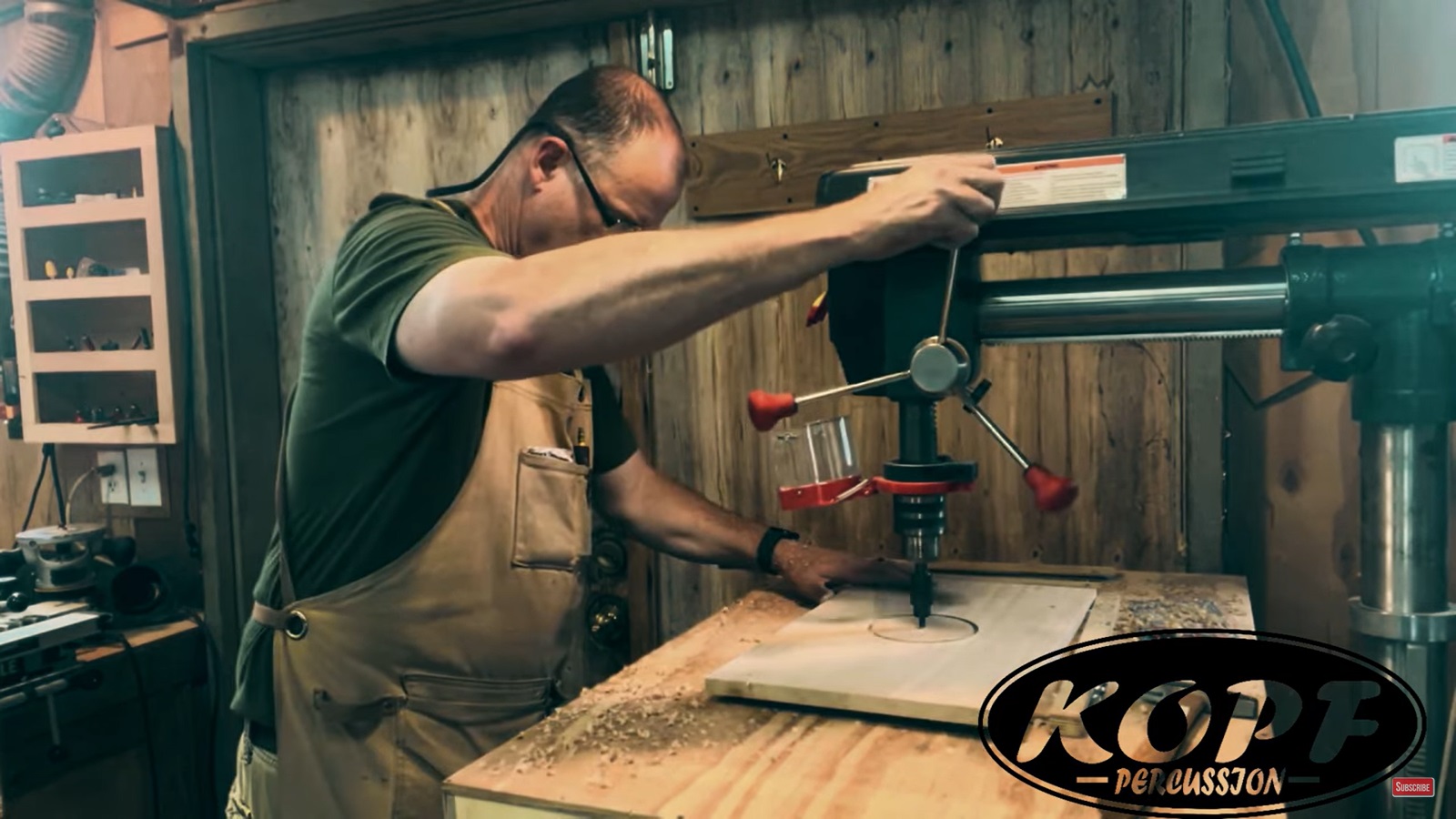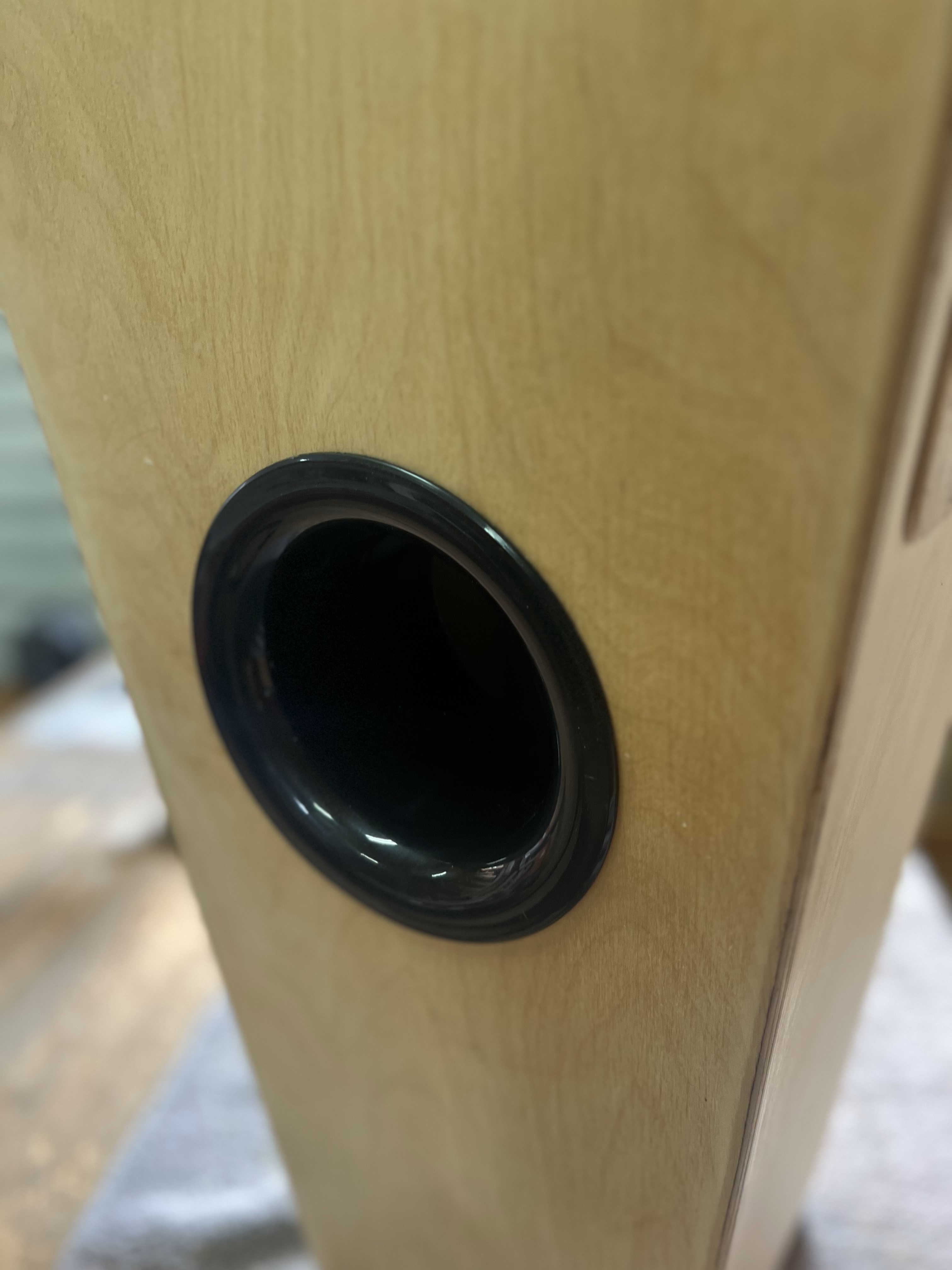Posted by Steve Head on 17th Aug 2024
How Big is the Hole in a Cajon? The Importance of Size and Placement
As the owner of Kopf Percussion, I often get asked about the various design elements of the cajon, one of the most common being the size of the hole in the back of the instrument. The sound hole might seem like a small detail, but it plays a crucial role in the overall sound and performance of the cajon. In this blog post, I’ll explain why the size and placement of the hole in a cajon matter and how it affects the instrument's sound.

The Role of the Sound Hole
The sound hole in a cajon, often referred to as the "port," is essential for the instrument's acoustics. It allows the air inside the cajon to move freely when the instrument is played, which amplifies the sound and enhances the resonance. Without a properly sized and placed sound hole, the cajon would produce a much weaker, less resonant sound.
Typical Size of a Cajon Sound Hole

While the size of the sound hole can vary depending on the design and intended sound of the cajon, a common size you’ll find is around 4 to 5 inches in diameter. This size provides a good balance between the deep bass tones and the higher snare-like sounds that the cajon is known for.
However, it’s important to note that this isn’t a one-size-fits-all situation. The exact size can vary depending on the specific model and the desired tonal characteristics. For instance, some cajons designed for more bass-heavy playing might have a slightly larger hole, while others focused on a crisper snare sound might have a smaller one.
How the Hole Size Affects Sound
The size of the sound hole has a direct impact on the cajon’s tonal qualities:
1. Bass Response:
- A larger sound hole allows more air to move out of the cajon, which can enhance the bass response. This is ideal if you’re looking for a deeper, more resonant bass tone. However, if the hole is too large, it might reduce the overall volume and control of the bass frequencies.
2. Snare Sound:
- A smaller sound hole generally focuses the sound more and can lead to a tighter, more controlled snare response. This can be particularly beneficial for players who want a clear distinction between the bass and snare sounds.
3. Projection:
- The size of the sound hole also affects how well the cajon projects sound. A well-sized hole ensures that the sound carries well in both live and studio settings. It helps in balancing the volume between the deep bass notes and the higher snare sounds.
Placement of the Sound Hole
In addition to the size, the placement of the sound hole is another critical factor. The sound hole is typically located at the back of the cajon, slightly off-center. This positioning helps with sound projection and ensures that the air movement inside the cajon is optimal for producing a balanced sound.
With most of my cajons, I place the soundhole on the side because I prefer to use dual resonating playing surfaces.
1. Off-Center Placement:
- An off-center sound hole allows for better differentiation between the bass and snare tones. It helps to focus the bass tones while still allowing the higher frequencies to resonate clearly.
2. Experimentation with Placement:
- Some cajon makers and players experiment with different placements of the sound hole to achieve unique sounds. For example, some cajons have sound holes on the sides or even multiple smaller holes instead of one larger one. These variations can create interesting tonal effects, though they might not be suitable for all playing styles.
Why I Pay Attention to Sound Hole Design at Kopf Percussion
At Kopf Percussion, I pay careful attention to the size and placement of the sound hole in every cajon I craft. I understand that this small detail can make a significant difference in the overall sound and playability of the instrument. My goal is to create cajons that offer a perfect balance between bass and snare, with excellent projection and clarity.
Whether you’re looking for a cajon with a booming bass, a crisp snare, or a versatile instrument that can do it all, I consider the sound hole’s design as a key element in achieving the perfect sound.
Conclusion: It’s More Than Just a Hole
So, how big is the hole in a cajon? Typically, it’s around 4 to 5 inches in diameter, but the exact size can vary depending on the desired sound. This seemingly small detail plays a huge role in the overall sound and performance of the instrument. The size and placement of the sound hole are crucial for ensuring that the cajon delivers the rich, dynamic sound that percussionists love.
At Kopf Percussion, I take pride in crafting cajons that not only look beautiful but also sound incredible. Every detail, from the wood selection to the sound hole design, is carefully considered to create an instrument that musicians can truly connect with. If you’re interested in learning more about my handcrafted cajons or finding the perfect cajon for your needs, feel free to explore my collection here.


